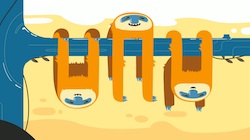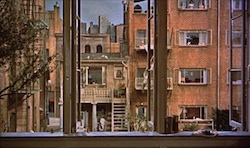
PUNGA for Volvo: Sloths (via Cartoon Brew). Update: More info on this great little spot from director/animator Gabriel Fermanelli.



An update to the familiar self-operated photo booth, this booth shoots a brief 3-second video at 1000 frames per second. Once captured, integrated software stretches the video to nearly one minute, slowing quick action to reveal normally imperceptible movements. The video is automatically uploaded to the Arts Festival YouTube channel, collecting together all the 3-second experiments the public performed throughout the festival.A view of the complete installation and rig:
Team:
Booth Design: Pablo Garcia and Spike Wolff
Software/Hardware Design: Riley Harmon and Dan Wilcox
Booth Construction: Kyle Rood
Camera Provided by: Matt Kearney of Fastec Imaging
Lighting Provided by: Gil Penderly of Visual Instrumentation Corp
Support by
The Jill Watson Family Foundation
Studio for Creative Inquiry [Carnegie Mellon University, Pittsburgh]


My company (Waveplant) collaborated with Leviathan to create an OSC-controlled projection mapping installation for HP to promote their TouchSmart line of PCs. Participants controlled the sound and visuals via the PCs with custom-created OSC interfaces (in TouchDesigner). Max/MSP was used to drive the audio and the visuals.Here’s an extended documentary of the project, with requisite shots of Chicago’s famous L train. (For some of you, that should cause a Pavlovian hunger for deep dish pizza.)
I was responsible for all the audio creation as well as the Max/MSP programming, and Leviathan created the visuals and handled the projection mapping.
Just to reiterate – Leviathan is the company that’s responsible (amongst many other things) for the visual component of Amon Tobin’s ISAM tour. My company / personal brand Waveplant was responsible for all the audio in this project as well as the maxMSP programmed back-end that was responsible for the live audio interactivity. Leviathan designed interfaces in Touch Designer that transmit information to Max/MSP. Max/MSP would respond with audio in various ways while sending OSC information back to those interfaces and touch designer which reflected those musical changes visually.
As an artist, I’m really excited about these kinds of marketing efforts. They’re incredible opportunities to push creative boundaries and subvert the more “linear” forms of advertising that we’re used to. What’s also really unique about them is the way they let the art stand on its own while at the same time involving the product in a hands-on (literally) capacity.